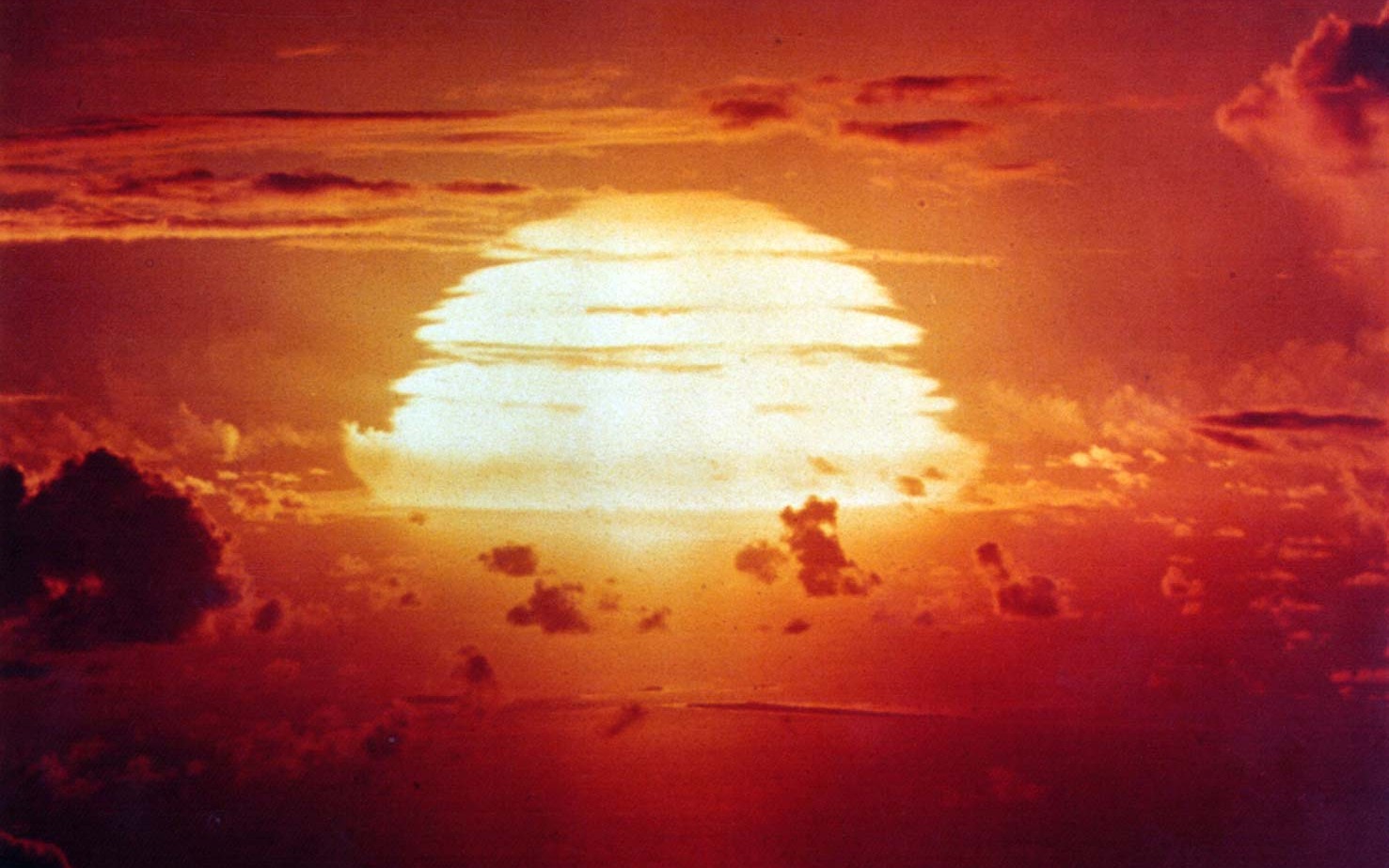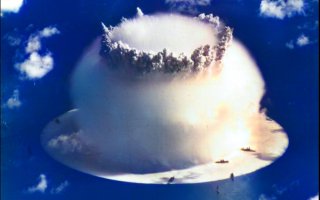Russia's Big Military Dream: A 100-Megaton Nuclear Weapon on an ICBM
A Russian military 100-megaton nuclear weapon was going to create overkill in the United States if used against cities such as New York, Los Angeles, and Chicago.
The old Soviet Union built a vast array of nuclear weapons during the Cold War but wanted to build far more nukes and bigger weapons. Moscow at one point wanted a massive 100 megaton nuclear bomb.
We asked one expert to explain what that would have meant: The Soviet Union’s test of the gargantuan nuclear device known as Tsar Bomba was the biggest of all time in 1961 – a record that still stands. It had a yield of 50-megatons that was five times larger than America’s biggest thermonuclear bomb in those days. Tsar Bomba weighed 60,000 pounds and it was 26-feet long.
But can you believe the Soviets thought of building something that could produce an even greater yield?
The Soviets Wanted to Deliver It with an ICBM
The USSR originally began developing a device that was twice as powerful plus powered by an intercontinental ballistic missile.
Soviet physicists and engineers made two other AN602 physics packages (besides the one that was deployed on Tsar Bomba) that could potentially produce at least a 100-megaton load – twice as much yield as the Tsar Bomba.
“The devices were used in the 8F117 warheads, and these were set to be placed on top of the UR-500 Gerkules ICBM. The UR-500 ICBM was successfully tested but never deployed, with it being further developed into the famous Proton rocket,” according to an article in Marca.com.
Khrushchev Threatened to Field a 100-Megaton Nuclear Weapon
Soviet Premier Nikita Khrushchev taunted the United States and NATO in August 1961. “You do not have 50 or 100-megaton bombs, we have bombs more powerful than 100-megatons. We placed Gagarin and Titov in space, and we can replace them with other loads that can be directed to any place on Earth.”
ICBM Design Leads to Proton Rocket
The UR-500/ Proton ICBM was a two-stage launch missile that was later developed into a three-stage model. In October 1963, a United States national intelligence estimate on Soviet strategic weapons described what would become the Proton rocket.
“We continue to believe that the Soviets are developing a large vehicle (with a million or more pounds of thrust), which could be used as a space booster, as a “global” rocket, or as a carrier for warheads yielding up to 100 MT. If test firings begin within the next few months, such a large vehicle could probably have an initial operational capability as an ICBM in the period of mid-1965 to mid-1966. Initially deployed sites would probably be soft, but the Soviets might find it feasible to incorporate hardening at some stage in the program.”
Sure enough, in 1965, the Soviets launched Proton 1. The two-stage tandem rocket weighed 27,000 pounds. Then the Proton became the workhorse of Russia’s space program. Multiple variants were used from 2000 to 2022. Proton rockets were launched 426-times and there are 14 remaining.
100-megaton Delivery Was a Bridge Too Far
As for the 100-megaton nuclear devices, head Soviet nuclear physicist and later dissident Andrei Sakharov had a plan to achieve that kind of yield. Sakharov’s team would use “clustering and staging.” By marrying together eight or more smaller hydrogen bombs and fastening them to clusters of thermonuclear fuel containers, a huge device could be built without innovations.
But the 100-megaton device, if built, was going to be too powerful and really had no military use, according to Nuclear Weapon Archive. Any deployment in Europe would result in fallout that would damage the Soviet Union and other Warsaw Pact nations.

Plus, the 100-megaton device was going to create overkill in the United States if used against cities such as New York, Los Angeles, and Chicago. Since the UR-500 ICBM was never deployed, the Soviets would have been forced to carry the 100-megaton device via bomber and it was thought that the Americans could shoot the airplane down before it got to its target.
About the Author
Brent M. Eastwood, PhD, is the author of Humans, Machines, and Data: Future Trends in Warfare. He is an Emerging Threats expert and former U.S. Army Infantry officer. You can follow him on Twitter @BMEastwood.


